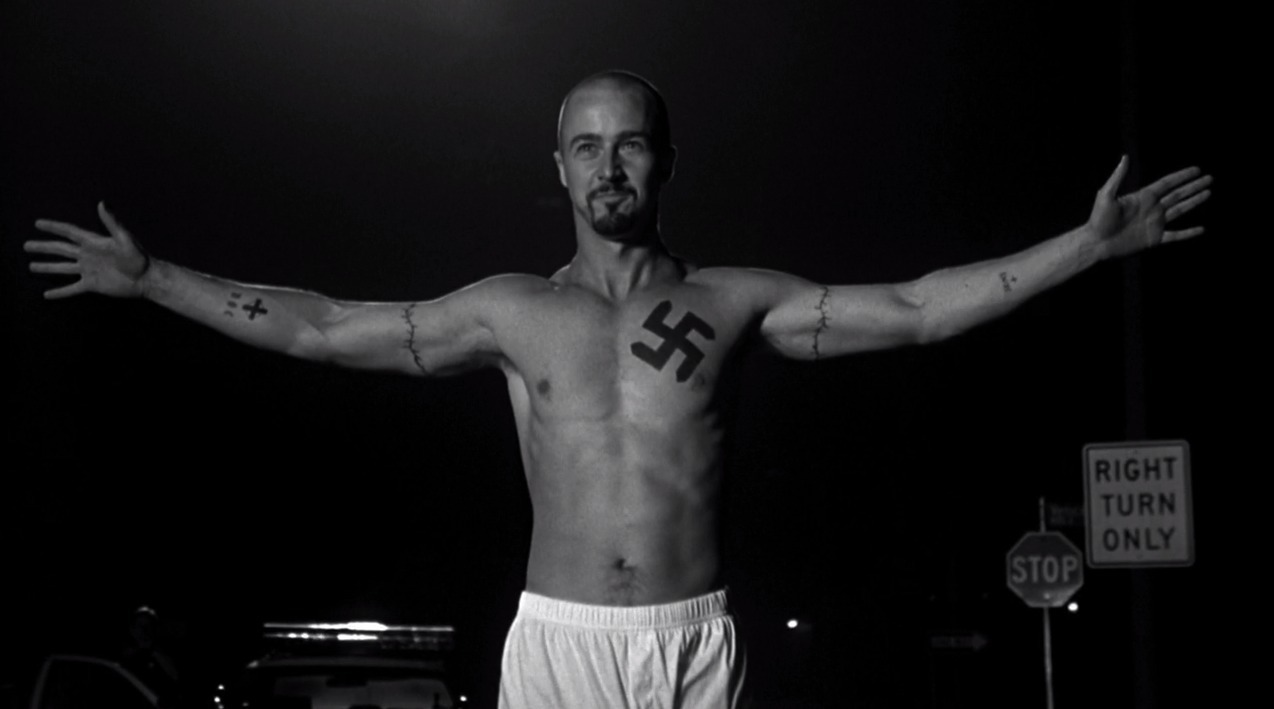Thriller
- Thrillers are much more based upon reality, which is how fear is conveyed as the idea is that it could happen to anyone.
- The plot lines are usually complicated and require thought to understand, this however can enrich the experience by providing a more in depth understanding of what messages the film is trying to convey.
- Suspense is built up over time to ensure the audience are genuinely interested.
- Based more upon the characters and understanding them, rather than action such as car chases or explosions.
- Sometimes the narrative isn't linear, it's complex. This means that the plot could be told through flashbacks or be circular.
- Audiences are usually males, aged 18 - 30 years old. The age is usually implied as most thriller films have an age rating of 18 to start with.
- Some directors have begun to challenge generic conventions and use females for lead roles (such as Kill Bill)
This is the trailer for Fight Club (1999), it has a complex narrative and an interesting plot that has a twist, Fight Club requires thought.
This is the dystopian city location from the film Looper (2012), it is quite futuristic and from this shot looks bright and optimistic but in reality the back streets are still dark, dirty and full of crime. This shows similarities to the cities of today, but in the future the city has become even more undesirable, linking back to the idea of a dystopia.
Although The Dark Knight (2008) is debatable to whether it is a thriller or not, I felt that The Joker (played by Heath Ledger) was a dark character more fitting to the thriller genre. His character could be interpreted in several different ways, cold and calculated but spontaneous and unrelenting at the same time. The Joker provoked questioning from the audience in relation to what his motivation was, this is partially why he appears so ambiguous in the film.
Black and white is used in American History X (1998) to represent flashbacks, this is an example of noir/chiaroscuro lighting. Note that Derek is partially consumed in shadow, showing his dark nature, this is achieved by non-ambient light which gives a spotlight effect. Edward Norton is known for playing characters with dual personalities, such as Derek in American History X and The Narrator in Fight Club.
The character in Drive (2011) is shown first to be gentle and caring, but as the plot develops and the people that are most important to him become threatened he takes matters into his own hands, stopping at nothing to achieve his goal. The line between right and wrong becomes blurred and a darker side to the character is revealed.
This scene depicts the two characters, Jules and Vincent, light heartedly discussing Europe and the metric system. They are on the way to kill some young men who owe money to their boss, Pulp Fiction depicts the demise of society in America in the way that the characters are presented, many have turned to crime in order to survive and don't really show much remorse whilst doing so.
Action/Adventure
- Action and adventure films are much less real, they contain characters that seem to break the laws of gravity, therefore the realism runs thin.
- Instead of focussing on the development of characters the genre usually focuses on big action, such as stunts, car chases, and explosions/gunfights.
- The target audience for this genre are most usually boys at the ages of 12 - 18 as it appeals to the sort of video game market and the fantasies that come with it.
- The plot is almost always linear, this allows the audience not to get caught up in it and directs the focus more onto the action.
This trailer depicts some of the cliches of an action film, big stunts, explosions and guns. When the two trailers are compared it is easy to see the differences.



You may be in a position to add to this post by referencing specific thriller films (screen shots and/or video clips which have ambiguous heroes, dystopic locations, dependency on noir lighting,lines between right and wrong blurred, exploring the dark heart of society.
ReplyDeleteI assume you have added examples to the post, thus it is greatly improved. I particularly like the way you have identified aspects of The Dark Night which indicate conventions of the thriller genre.
ReplyDeleteNote the screen shot from American History X focuses on the swastika and the ironic tongue in cheek road sign "right turn only" indicating this film explores fascism/skin head culture/racism in the USA. I've not come across this film but it sounds interesting since I've just read a review.
Thanks for the blog loaded with so many information. Stopping by your blog helped me to get what I was looking for. ซีรี่ย์ฝรั่ง
ReplyDelete